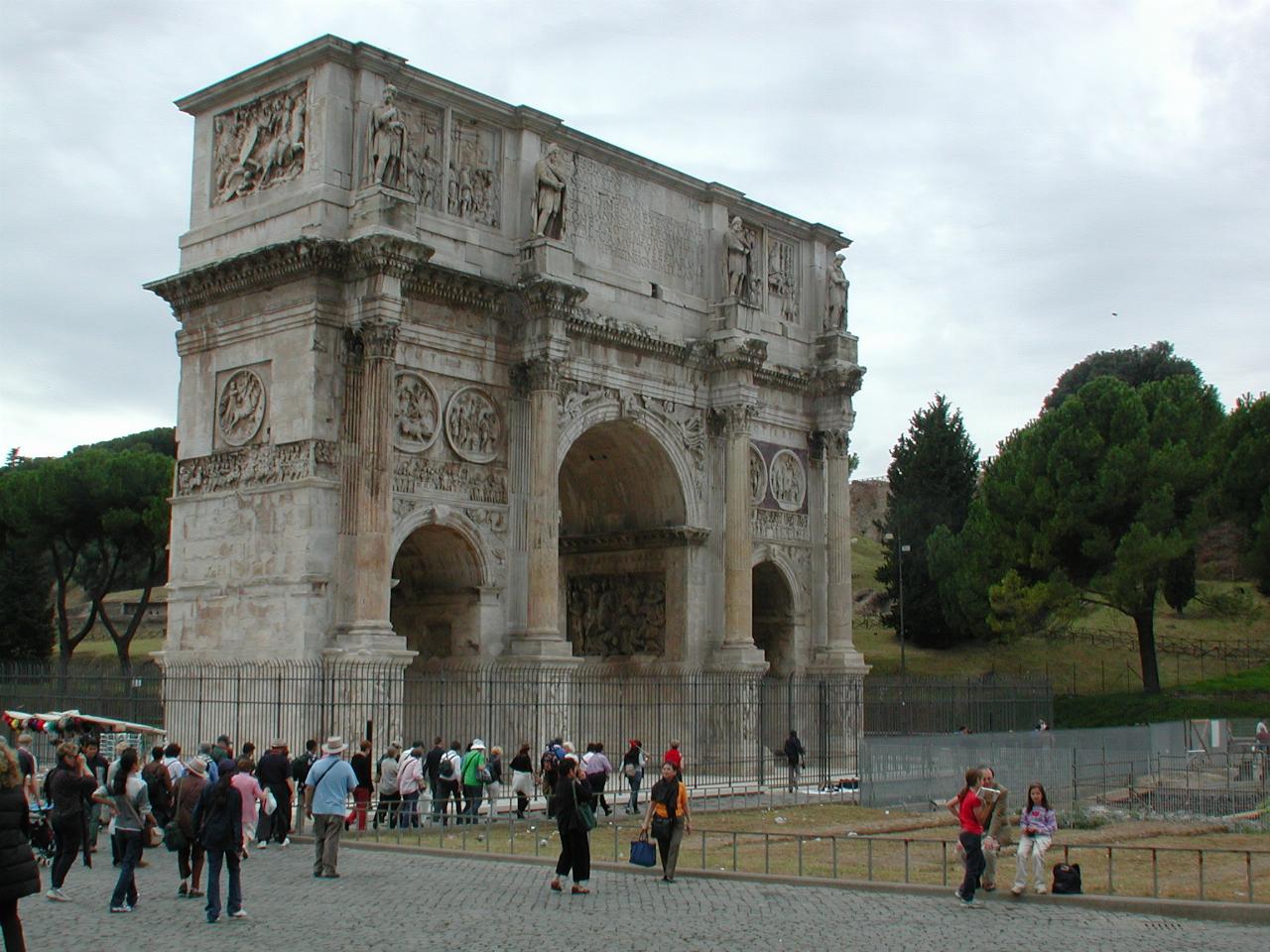

The Arch of Constantine was built by the Senate and Roman people at the edge of the Forum, on the Via Sacra, in memory of the victory over Maxentius at Ponte Milvio in 312. Because it was built largely from pieces from the arches of Trajan and Marcus Aurelius and from other monuments, it was derisively called a "cornacchia di Esopo", or Aesop's Magpie.
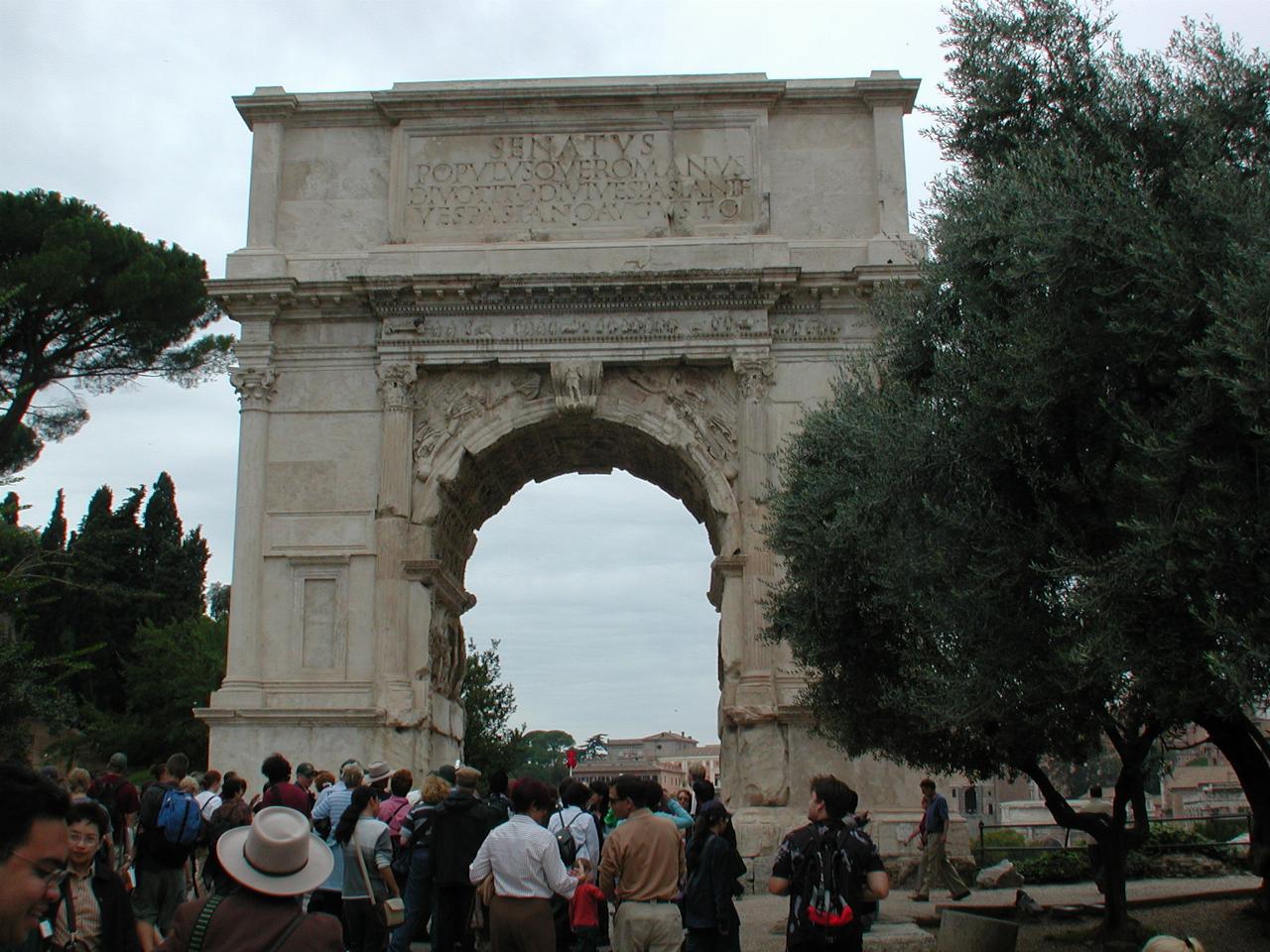
The Arch of Titus is built on the Via Sacra, at the top of the Velida. It was built by the Senate after the Emperor's death in memory of his conquest of Jerusalem (70 AD).
The Forum was crossed by the Via Sacra, which led to the Capitol Hill and also served as the route of the triumphal processions of victorious generals laden with booty and followed by ranks of prisoners. While the oldest section of the Forum (built in the Republican era) stretched from the opposite side of the valley to the edge of Capitol Hill, the entrance on the square of the Colosseum leads to the most recently built section, which dates to the Imperial age.
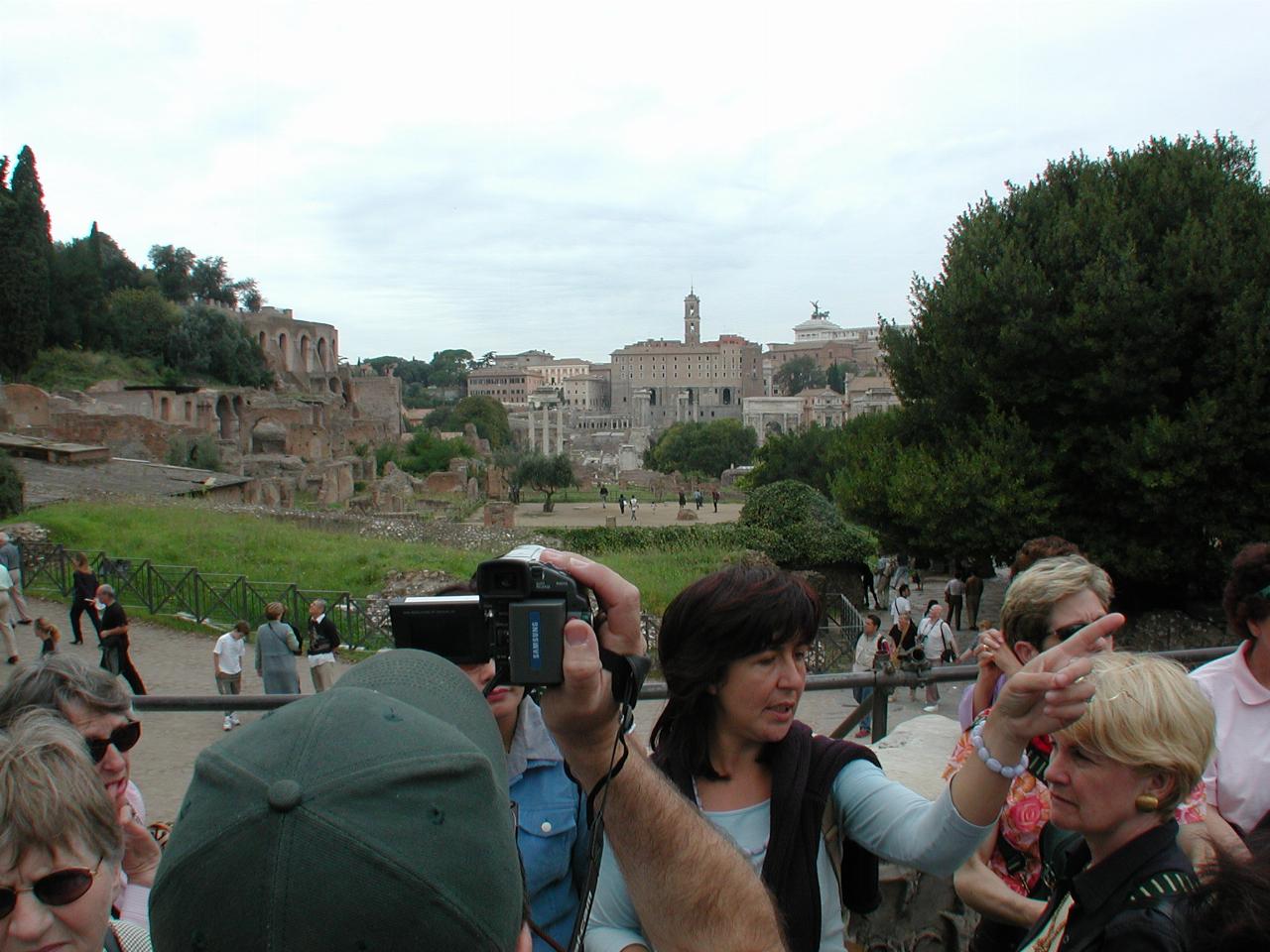
Paola discussing the finer points of the Forum with Group N. This view is overlooking the Forum, from near the Arch of Titus.
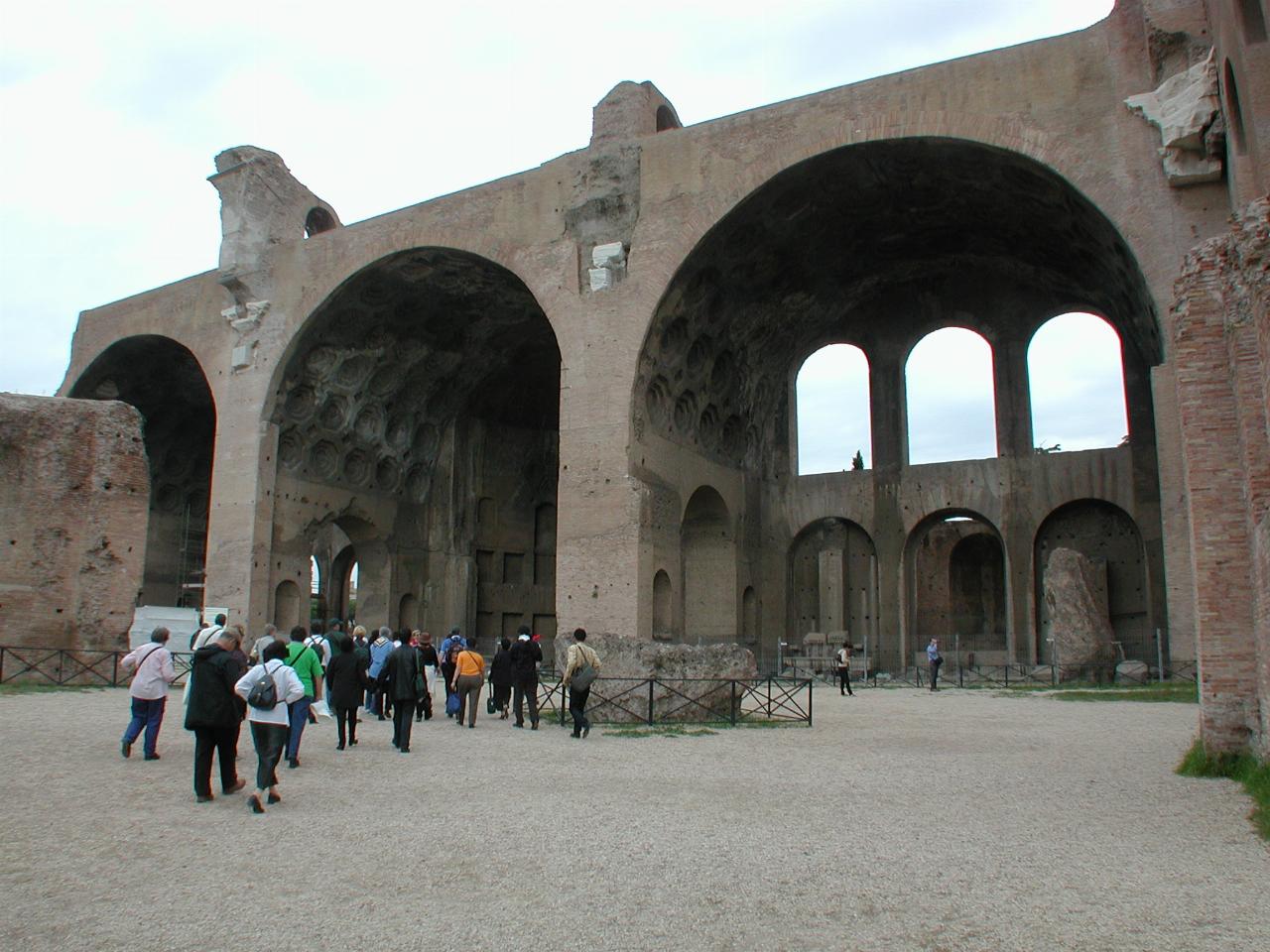
The (remnants of) the Basilica of Maxentius (also called Constantine). It was the last edifice built in the city which conveys the magnificence of Ancient Rome. It was begun by Maxentius and completed by his successor Constantine. Part of the imposing 4th century structure has been restored, revealing the portion which faced the Forum. The great apse and powerful barrel vaults were a source of inspiration to Renaissance architects; it is thought that the ruin inspired Bramante's plans for the new (current) St. Peter's.
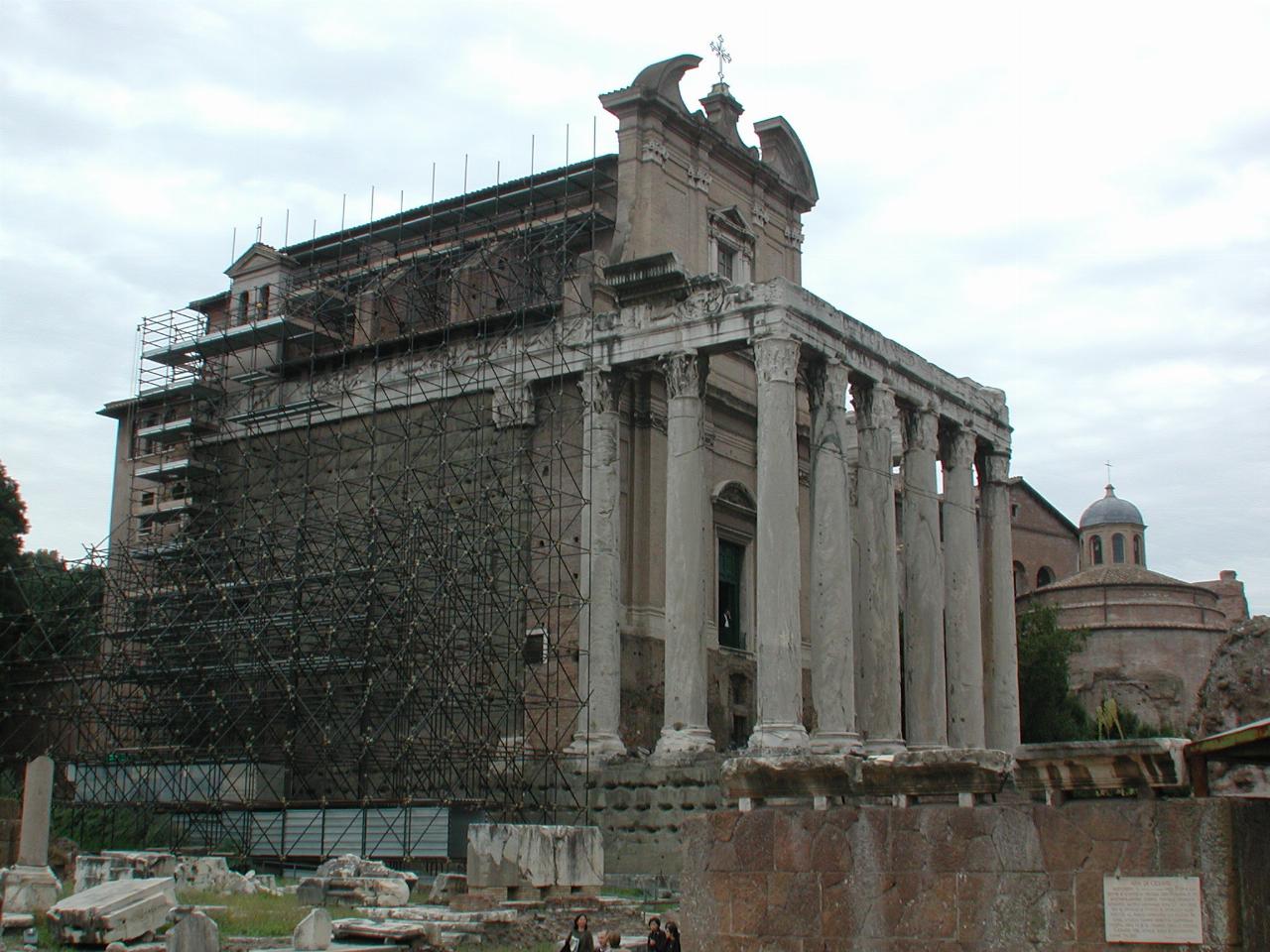
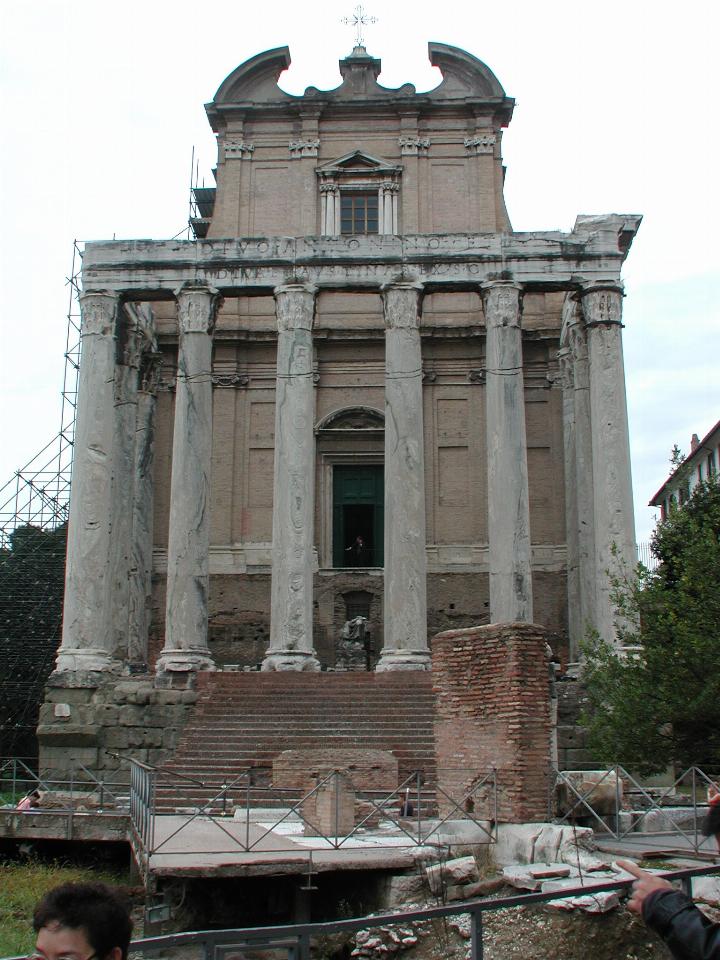
Another example of modern technology in an ancient setting - a close up of the door shows a man using a cell phone!
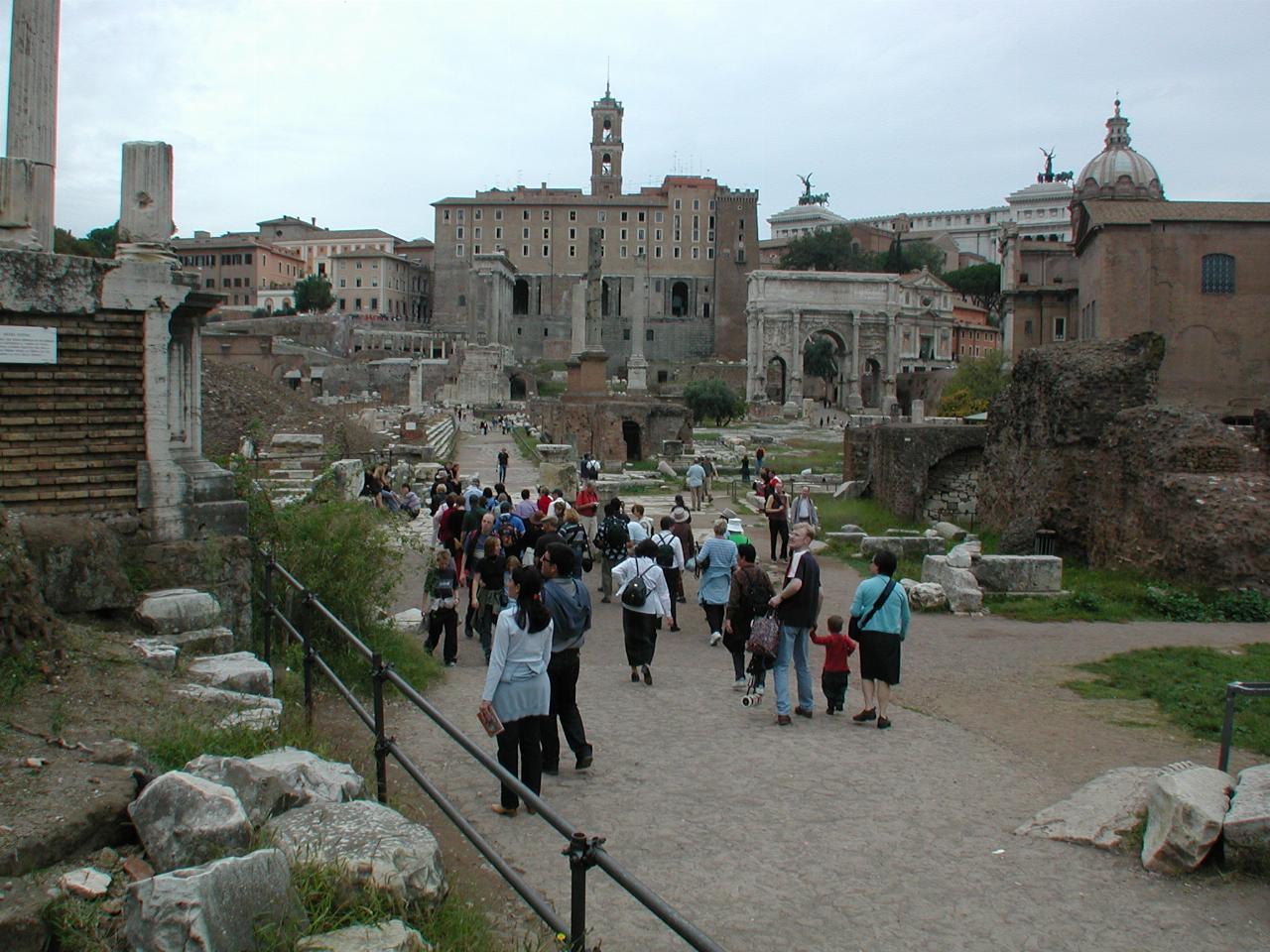
Down in the Forum, with the Victor Emmanuel Monument visible in the backgrougnd - the building with the two statues on the end towers.
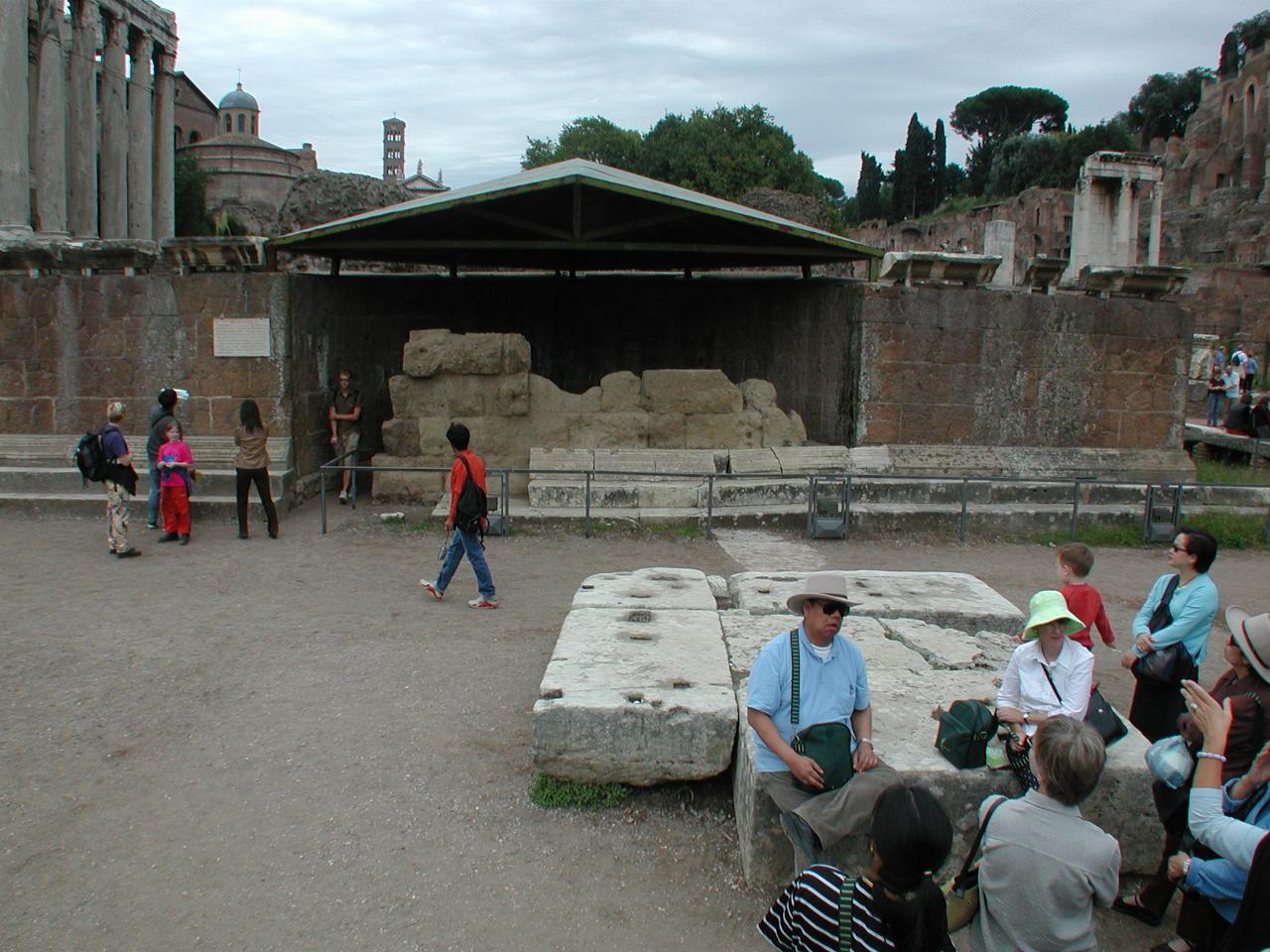
Et tu Brute?
The Temple of Julius Caesar, which Octavian built in memory of his uncle, was begun in 42 BC on the spot where the dictator's body was burned. The temple was not consecrated until 29 AD.